
Issue #: SP17
Published: December / January 2022
- Price per issue - digital : 7.90€Digital magazine
- Price per issue - print : 9.90€Print magazine
- Access to Multihulls World digital archives Digital archives
When you think about it, properly stowing supplies on board is just as important as eating well... smart, thoughtful storage goes a long way towards making your cruise a success. Having everything within reach is essential for keeping the crew in good spirits. When we are well organized, we get along well!
You’ve just done the shopping for a week or two of coastal cruising. All the groceries are on the dock or in the dinghy and you’re wondering where it will all go. Don’t worry, most of our multihulls are equipped with numerous lockers and compartments, so everything should fit without any problem... Once loaded on board, each food item has its own place. Yes, but which one? There are five points to consider: the rolling of the vessel, the humidity, the weight, the expiration date and the packaging. The goal is that your ratatouille or omelet is not already done before it reaches the pan. Cardboard packaging is to be avoided for a long cruise as the larvae of little critters love to lodge in it. However, for a few days, it is a good ally for securing provisions. It is preferable that the whole crew, including children, be self-sufficient for breakfast or for snacking. Quick access is important - otherwise beware of seasickness! For the purposes of this article, we have organized the supplies on board a 40-foot catamaran for a week’s cruise. The meals and snacks for five adults and two children reflect a common situation. Here is a slideshow of how we compartmentalized the food.
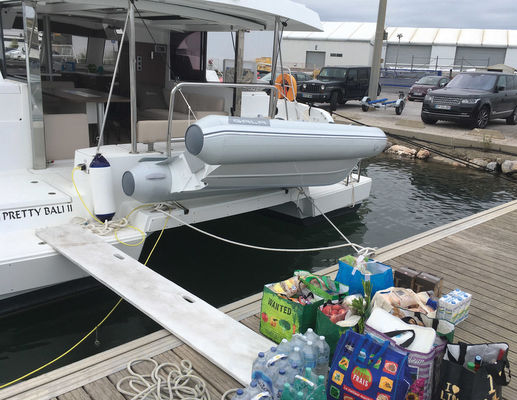
The groceries are unloaded on the dock. Now it’s time to stow them on board, but not just any old way. This is an operation that can easily take one to two hours. The goal is to make sure that all the supplies are in the right place, easily accessible and safe.
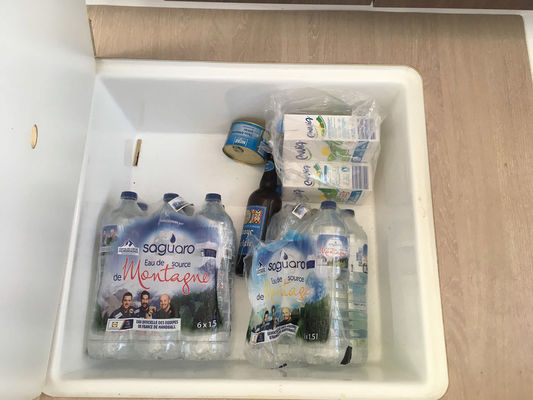
Water, canned food and milk are quite heavy and should be stored as low as possible so as not to affect the performance of the multihull (here under the floor of the nacelle). Cartons of milk should not be stored in the bottom of the hulls because this type of packaging is sensitive to humidity.
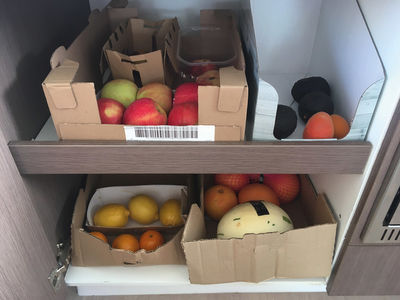 |
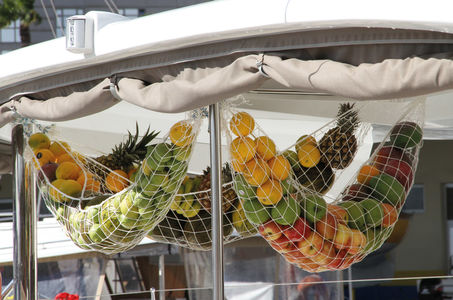 |
To store fruits and vegetables for a week or two (but no longer), you can use cardboard boxes found in supermarkets. By separating the fruits and vegetables, you can prevent them from spoiling due to the rolling of the boat. The fruit should also be turned every day to prevent any traces of mold. For a longer life, nets are an excellent option.
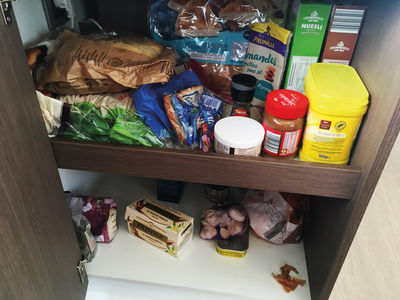 |
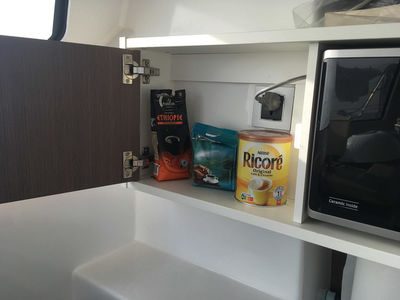 |
Bread, sugar, jelly, and breakfast beverages must be easily accessible for the early risers. They should be well stored in the same cupboard. Chocolate and cereals should be kept low down for the children. A cupboard can be reserved for coffee.
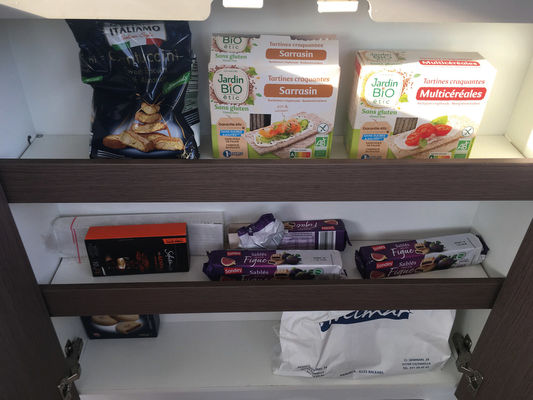
Snacks for the afternoon or the night watch should be stowed in a dedicated spot. The children - and of course the adults - will be able to come and help themselves without having to rummage around all over the multihull. This way, the night watch will be much easier...
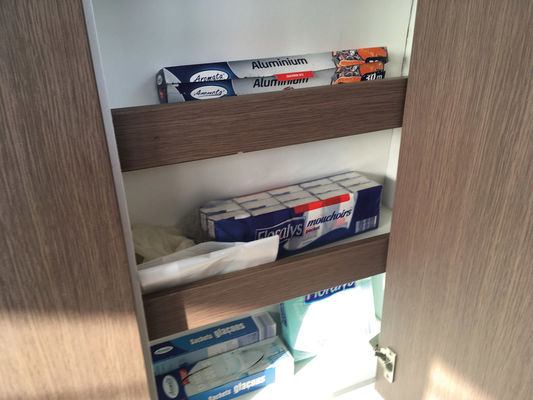
Plastic bags, aluminum foil and kitchen towels are used several times a day - they should be stored in one easily accessible place.
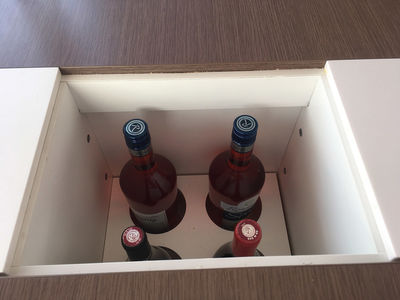 |
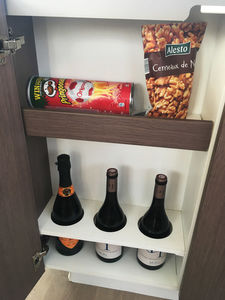 |
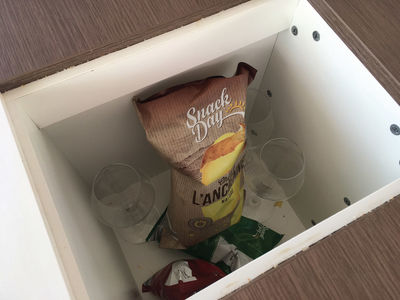 |
Glass bottles must be secured to avoid breakage. Packets of potato chips are very useful when no specific racks are available and even for wedging glasses. As for ...
What readers think
Post a comment
No comments to show.